First look at how the radio signal spectrum is divided:


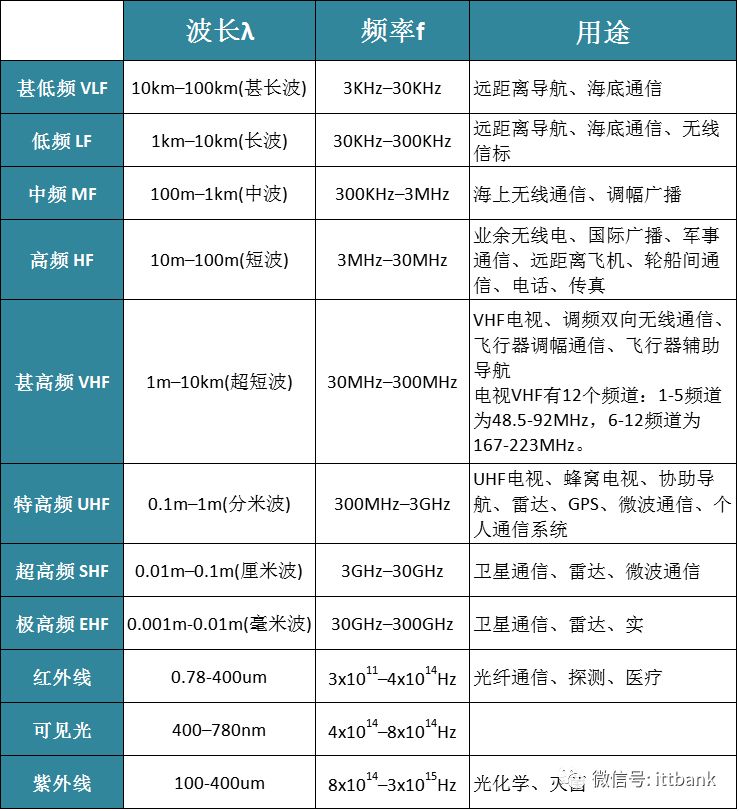
1, 5G NR
3GPP has specified a list of frequency bands supported by 5G NR. The 5G NR spectrum range is up to 100 GHz and two major frequency ranges are specified:

1Frequency range 1 (FR1): It is what we usually say below 6GHz frequency band
• Frequency range: 450MHz - 6.0GHz
• Maximum channel bandwidth 100MHz
2Frequency range 2 (FR2): is the millimeter wave band
• Frequency range: 24.25GHz - 52.6GHz
• Maximum channel bandwidth 400MHz
The 5G NR supports 16CC carrier aggregation.
Since 5G NR defines flexible subcarrier spacing, different subcarrier spacing corresponds to different frequency ranges, as follows:

The 5G NR frequency band is divided into: FDD, TDD, SUL, and SDL. SUL and SDL are Supplementary Bands, which represent uplink and downlink respectively.
Different from LTE, the 5G NR band number identifier starts with "n", such as LTE B20 (Band 20), and 5G NR is called n20.
The specific 5G NR frequency bands currently specified by 3GPP are as follows:
FR1 (450 MHz–6000 MHz):

FR2:

As shown in the above figure, the 5G NR includes some LTE bands, and some new bands have also been added. Currently, the 5G bands most likely to be deployed in the world are n77, n78, n79, n257, n258, and n260, which are 3.3 GHz-4.2 GHz, 4.4 GHz-5.0 GHz, and millimeter wave 26 GHz/28 GHz/39 GHz.
What is the distribution of 5G spectrum around the world?
1) North America
On July 14, 2016, the FCC voted to allocate the 5G frequency spectrum above 24 GHz to become the first country in the world to allocate available spectrum for 5G networks.
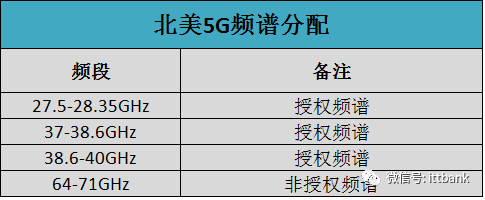
2) Europe
The European Commission’s Radio Spectrum Policy Group (RSPG) drafted a draft 5G spectrum strategy in June 2016 and publicly solicited opinions within the EU. On November 9, 2016, RSPG released the EU 5G spectrum strategy.
These bands are:
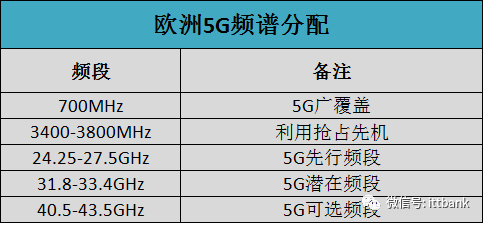
3) Asia
In 2010, APT (Asia Pacific Telecommunications Organization) agreed to use 700M to develop mobile communications, commonly known as the APT700. This spectrum corresponds to FDD Band 28 (703-748/758-803 MHz) and TDD Band 44 (698-806 MHz) and is referred to as the "digital dividend" frequency band.
In 2016, APT agreed on the proposal to organize the frequency band 698-806 MHz, which may be used for future 5G networks.
APT is studying 470-698MHz, 1427-1518MHz, 3300-3400MHz, 4800-4990MHz and greater than 24GHz frequency band, these frequency bands are also included in the list of WRC-15 (estimated frequency band 4800-4990 will be updated). The APT Wireless Group (AWG) plans to complete the study in the third quarter of 2018.
In addition, China, South Korea, and Japan, as the pioneers of 5G, have begun 5G testing in the 3GHz and 5GHz bands. South Korea and Japan are also conducting 5G trials in the 26.5-29.5 GHz band, hoping to launch 5G high-band mobile services in the 2018 Winter Olympics and the 2020 Olympic Games.
2, 4G LTE
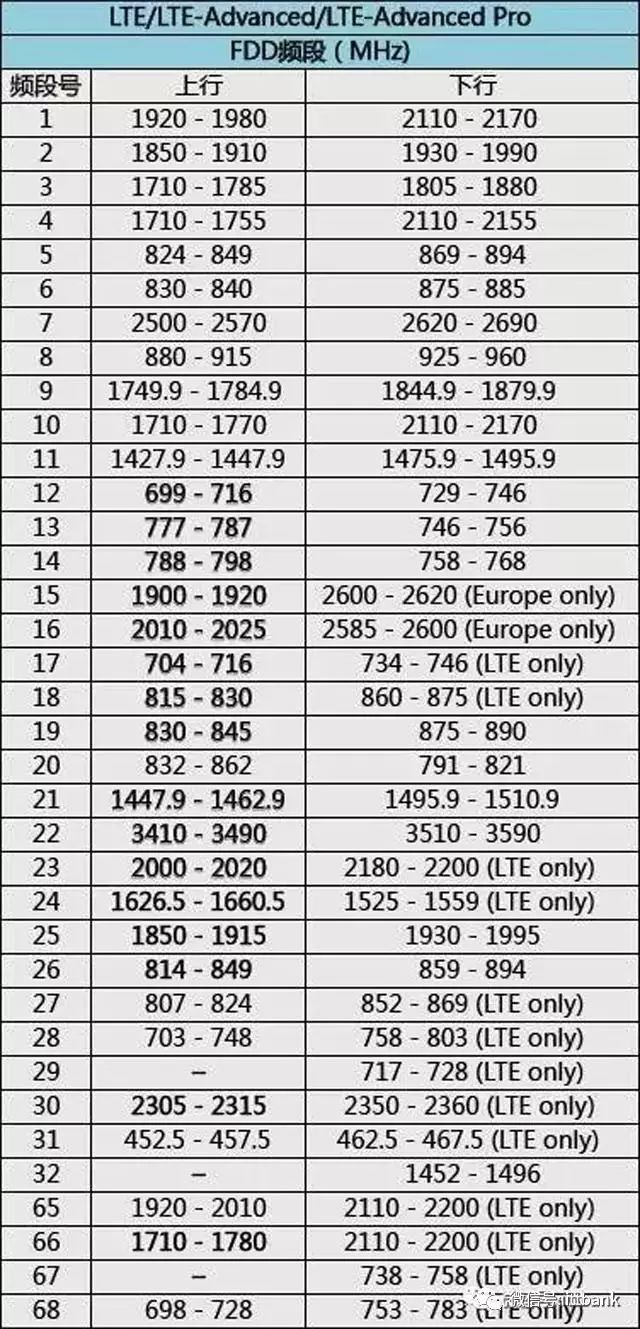
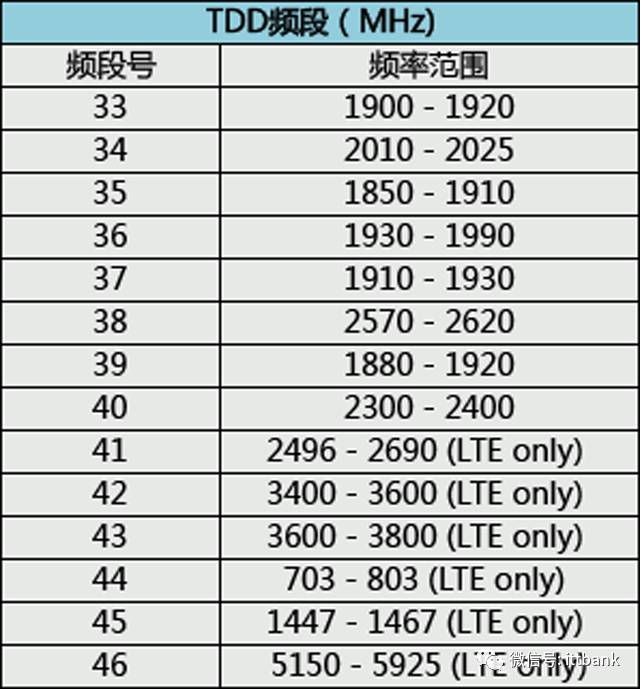
3, 3G WCDMA
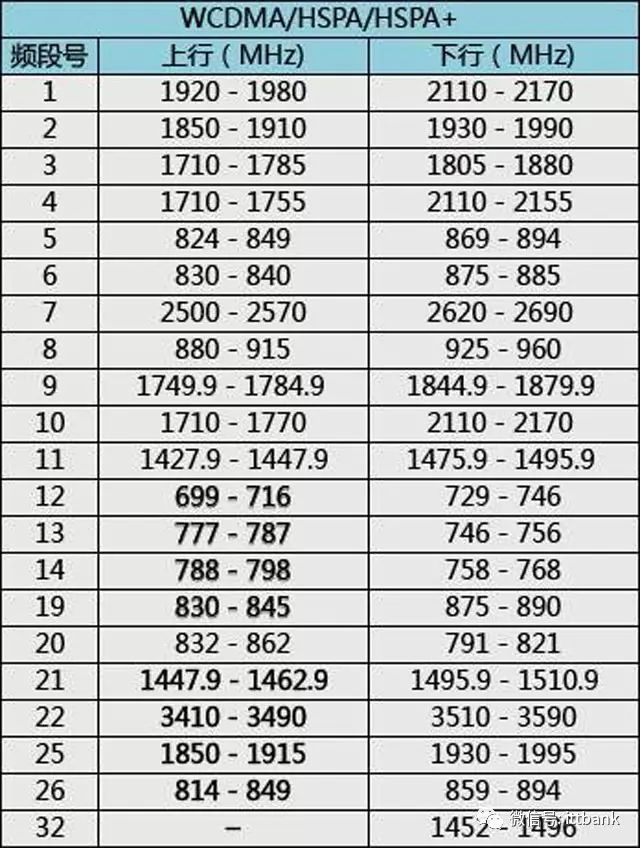
4, 3G TD-SCDMA

5, 2G GSM
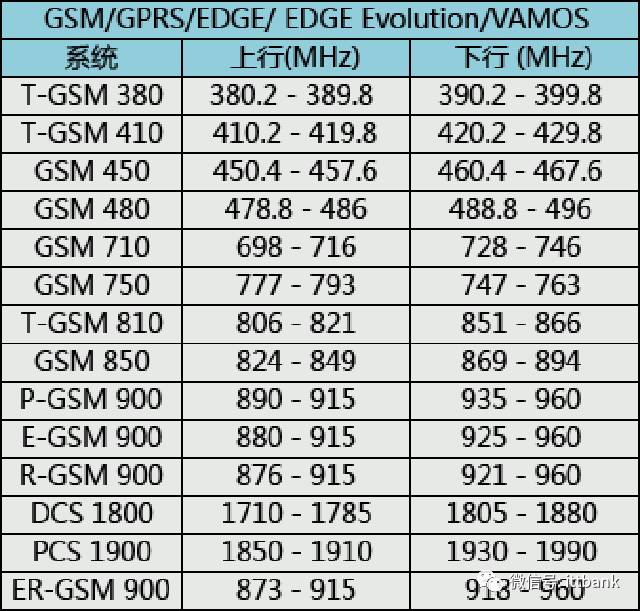
Remarks:
P-GSM, reference GSM-900 band E-GSM, extended GSM-900 band (including reference GSM-900 band) R-GSM, railway GSM-900 band (included reference and extended GSM-900 band) T-GSM, cluster The wireless system-GSMER-GSM900, which is Extended Railway GSM 900, broadens its frequency range on the basis of the original railway communication system (TX: 873-915, RX:918-960).
6, CDMA2000
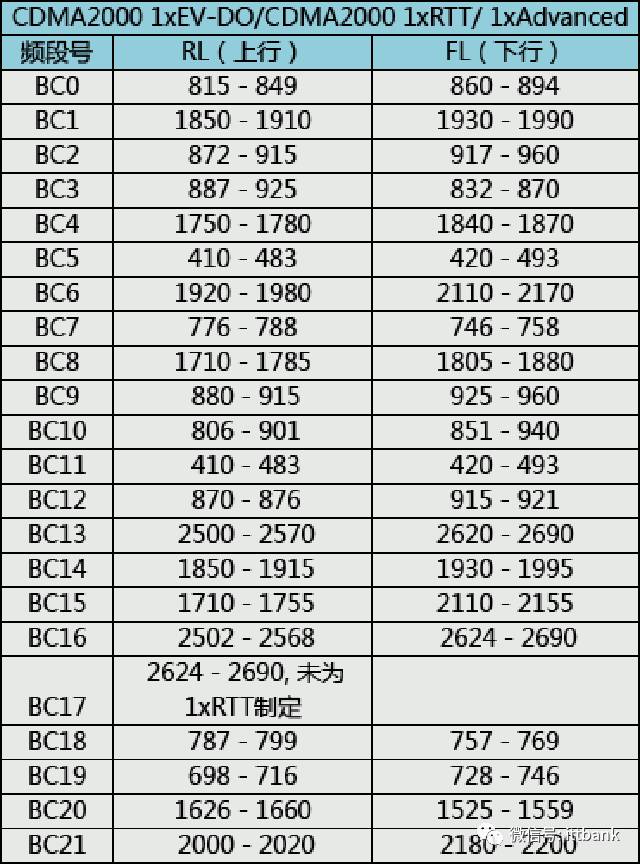
7. WiMAX
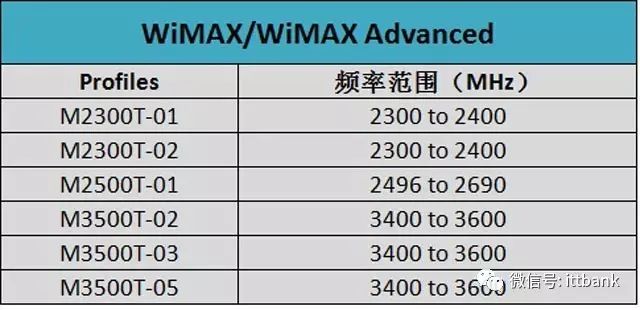
8, public security
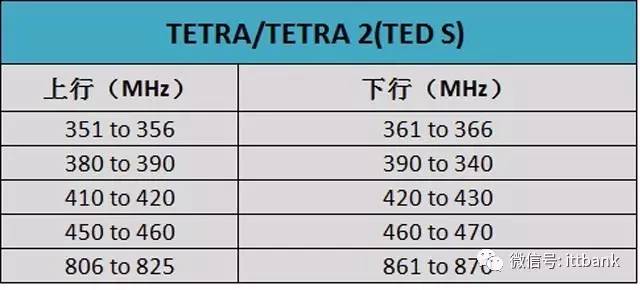
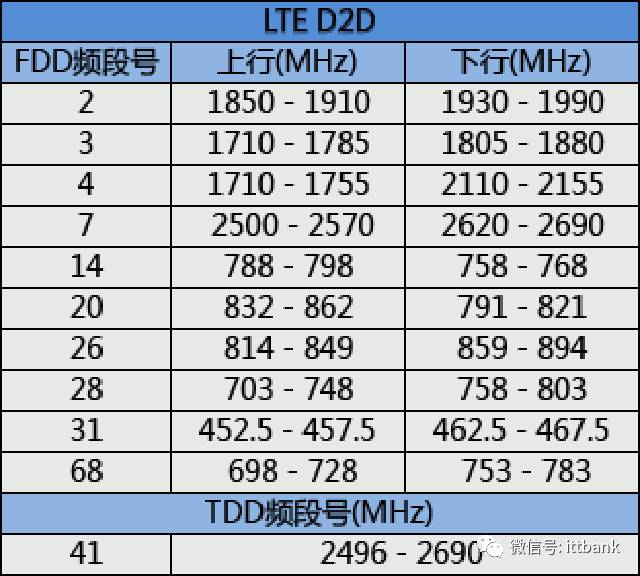

9. Low Power Wide Area Internet of Things (LPWAN)
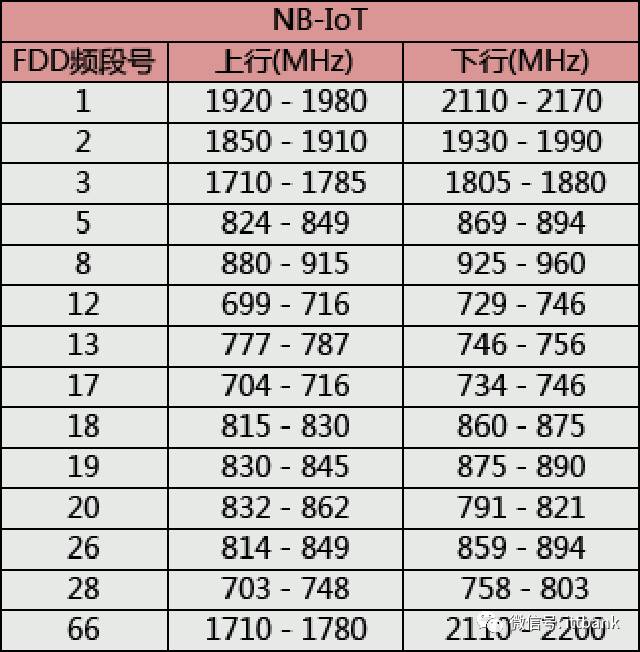
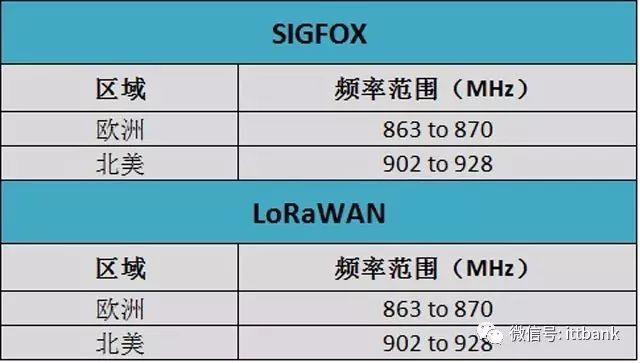
10, WiFi, Bluetooth, NFC, RFID and other wireless connections
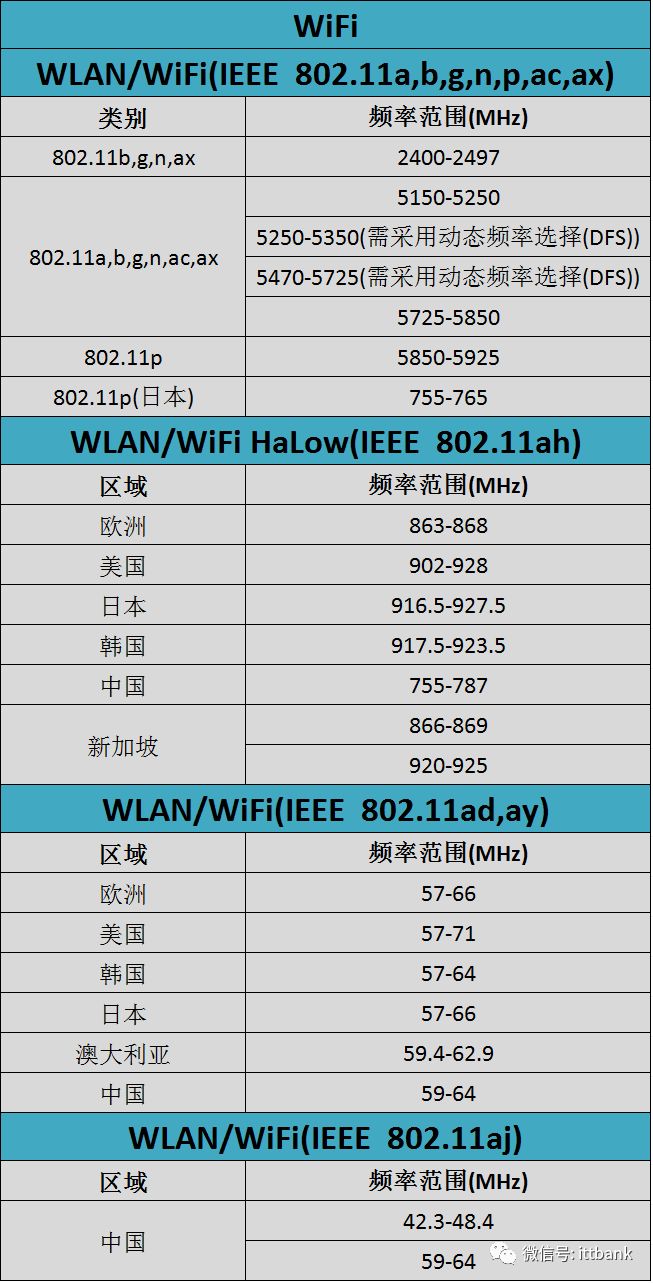
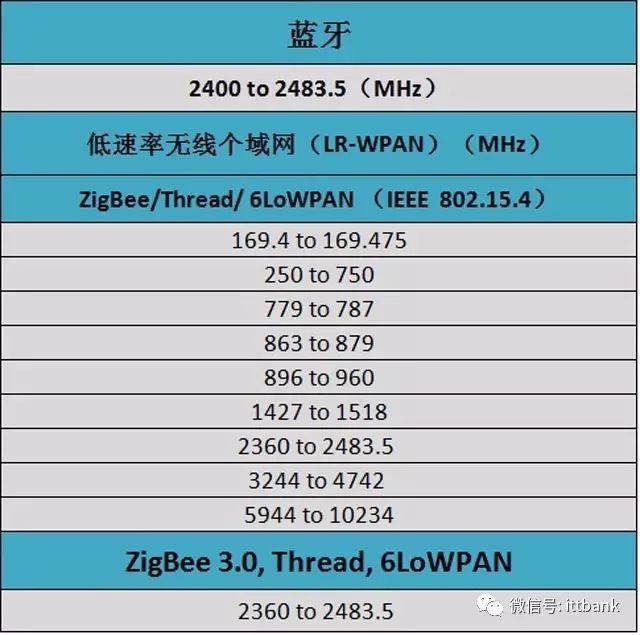


11. Global Navigation Satellite System (GNSS)
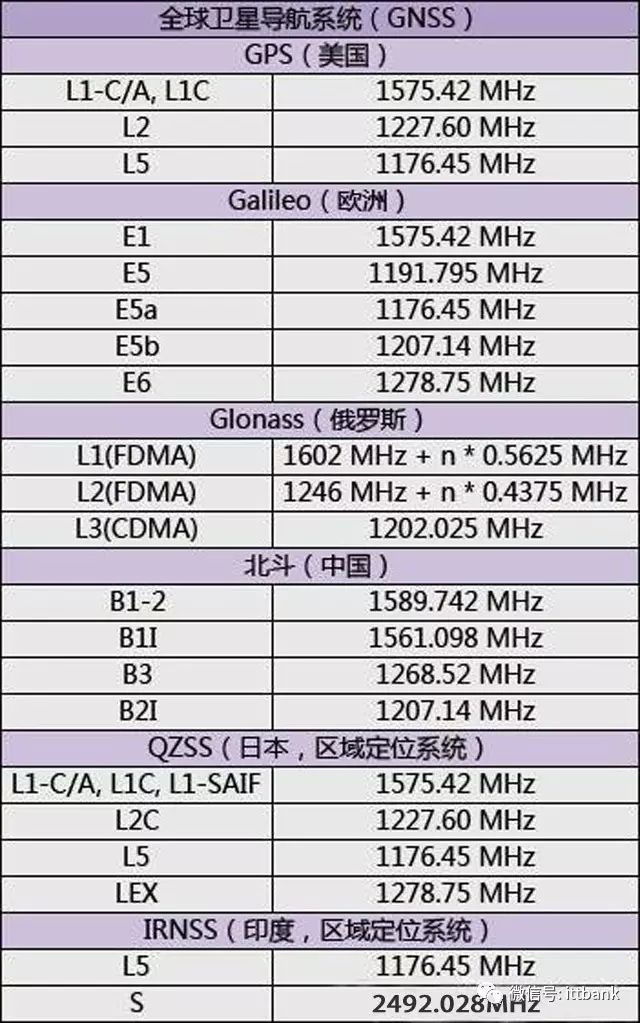
12. Domestic distribution of spectrum

Three operators frequency division
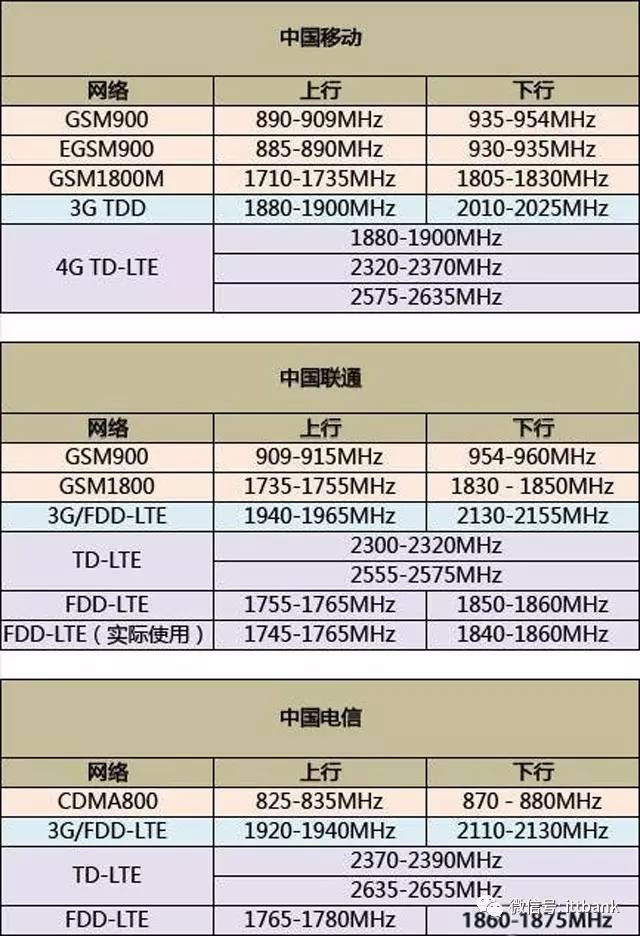
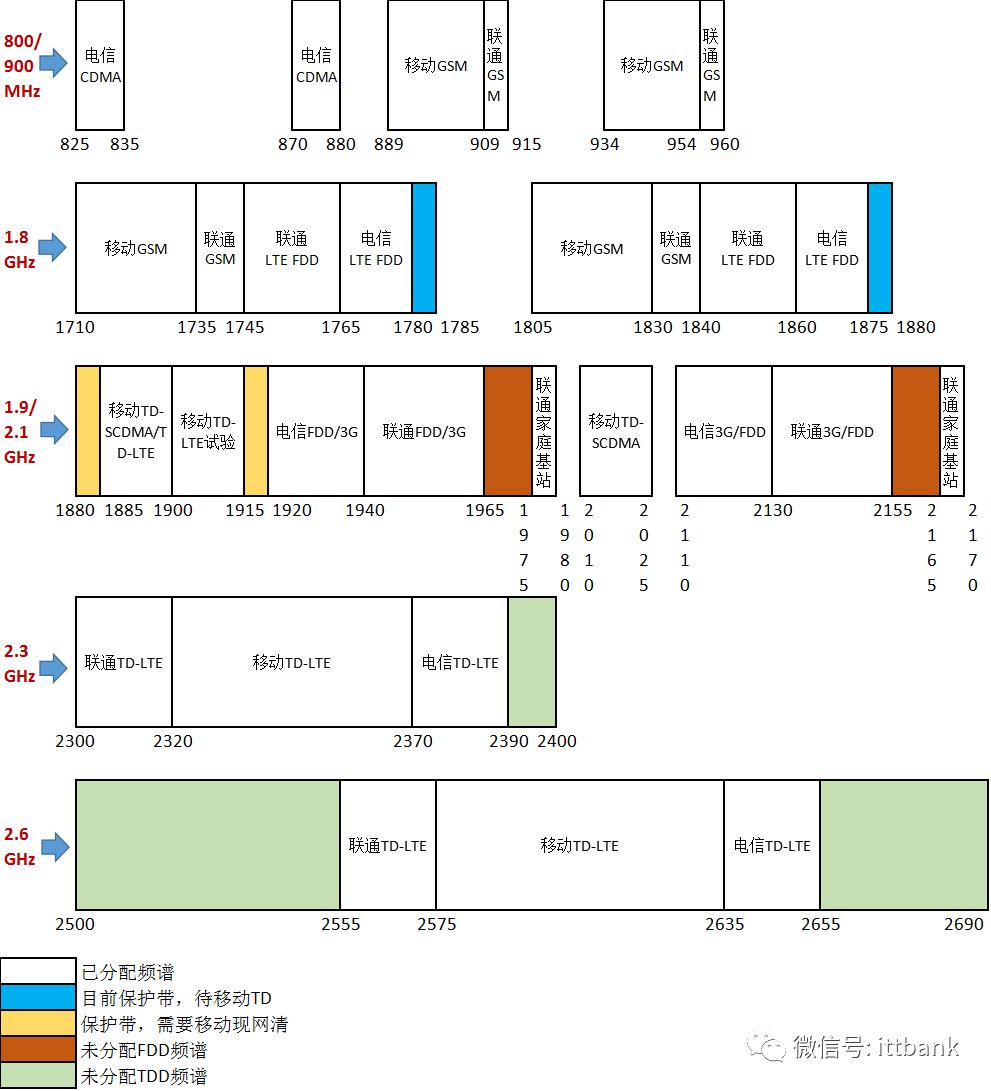
Note:
1) Yellow protection band: The original mobile phone used was 1880-1900 (20M), and the telecommunication service was 1860-1875 (15M). Due to the interference between TD and FDD, 5M of 1875-1880 should be reserved for isolation. After telecom clears the PHS occupied band (1900-1920) and returns it to the mobile, the mobile will have a complete 40M band from 1880-1920, but the isolation band will have 5M between 1880-1885. In this way, telecommunications can use 1860-1880 as a complete 20M carrier. Move 35M using 1885-1920.
2) According to the “Ministry of Industry and Information Technology agrees to approve the application of 800M and 2100M frequency band for LTE networking in China Telecom†in June of this year, China Telecom can use CDMA 1X/DO band 825-835/870-880, 1920-1940/2110-2130. Renew LTE FDD.
3) According to the recent "Ministry of Industry and Information, agreeing to approve China Telecom's adjustment of some frequencies for LTE network approval", China Unicom may be in the original 2G and WCDMA bands 909-915/954-960,1735-1750/1830-1845,1940-1965/ 2130-2155 is cultivating LTE FDD.
The utility model provides a disposable electronic cigarette, comprising: a hollow shell, the bottom of the shell is provided with a lower cover; the shell contains an atomizer, and the outer side of the atomizer is sheathed with a disposable cigarette A bomb, a microphone cover is arranged under the atomizer, a microphone is covered under the microphone cover, a battery is arranged on one side of the atomizer, and an upper cover is arranged on the top of the casing; The atomizer includes an atomizing corThe utility model provides a disposable electronic cigarette, comprising: a hollow shell, the bottom of the shell is provided with a lower cover; the shell contains an atomizer, and the outer side of the atomizer is sheathed with a disposable cigarette A bomb, a microphone cover is arranged under the atomizer, a microphone is covered under the microphone cover, a battery is arranged on one side of the atomizer, and an upper cover is arranged on the top of the casing; The atomizer includes an atomizing core, an oil-absorbing cotton sleeved on the outside of the atomizing core, and an atomizer outer tube sleeved on the outside of the oil-absorbing cotton. The disposable electronic cigarette provided by the utility model absorbs the smoke oil on the surface through the absorbing cotton, and then atomizes the smoke through the atomizing core, which greatly reduces the risk of oil leakage, at the same time, reduces the burning of cotton and ensures the smoking taste.e, an oil-absorbing cotton sleeved on the outside of the atomizing core, and an atomizer outer tube sleeved on the outside of the oil-absorbing cotton. The disposable electronic cigarette provided by the utility model absorbs the smoke oil on the surface through the absorbing cotton, and then atomizes the smoke through the atomizing core, which greatly reduces the risk of oil leakage, at the same time, reduces the burning of cotton and ensures the smoking taste.
disposable vape,vape pen,vape accessories,vape store,vape battery,e-cigarettes,Disposable Pod
Suizhou simi intelligent technology development co., LTD , https://www.msmvape.com
![<?echo $_SERVER['SERVER_NAME'];?>](/template/twentyseventeen/skin/images/header.jpg)